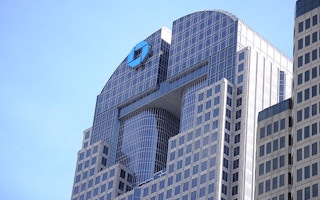Earlier this year, Moody’s Corp said the green bond market would double in 2017, from $93 billion last year to $206 billion. On Friday, JPMorgan Chase lent that projection credence by committing to funnel $200 billion into clean energy and general sustainability projects between now and 2025, and to get all of its energy from renewable sources by 2020.
The company offered a detailed strategy for achieving its own shift to renewables, which includes long-term power purchasing agreements like a 20-year deal it signed last year with the 100-megawatt Buckthorn wind farm in Erath County, Texas. That commitment alone will meet 13 per cent of the banking group’s nationwide needs.
The clean financing commitment represents more than $20 billion per year in finance, up from roughly $16 billion per year currently, and spokesperson Stephen O’Halloran said the mechanisms will focus on supporting capital increases, managing risk and underwriting debt – primarily in the renewables sector, but also by “underwriting debt with a sustainable use of proceeds for municipal, corporate and multilateral clients” and “supporting clients’ sustainability initiatives.”
Beyond renewable energy?
The wording clearly leaves the door open for finance beyond renewable energy initiatives, and the announcement comes as consumer-facing companies are competing to “out-green” each other by pledging to reduce their impact on forests – even as banks come under heat for financing projects that do the opposite.
In March, for example, the Forest Trends Supply Change initiative identified 447 companies that have promised to improve the way they source palm oil, soy, timber & paper and cattle products, but the Tropical Forest Alliance has pointed out that such commitments will come to naught if banks continue to finance projects that contribute to climate change or drive deforestation.
Last month, banking giant HSBC won green cred by asking the Roundtable on Sustainable Palm Oil (RSPO) to investigate a company that the bank was lending money to after NGOs said the company would use the money to convert pristine forest to palm plantation – a clear indication that investors were beginning to perceive “dirty” projects as financial risks.
But avoiding risks and proactively investing in sustainable projects are two different things, and beyond renewable energy it’s not clear where the bank may seek to funnel finance.
On the one hand, the United States is home to a $25 billion “restoration economy” that employs over 220,000 people, but research from the Forest Trends Ecosystem Marketplace initiative shows that impact investors looking for sustainable projects left over $3 billion undeployed last year.
The bank clearly sees returns in wind power and solar energy, while other investors are struggling to find returns in broader sustainability investments. The challenge now is to create a vortex of risk, reward, and common good that attracts that money and helps us evolve a truly sustainable economy.
This story was published with permission from Ecosytem Marketplace.

















